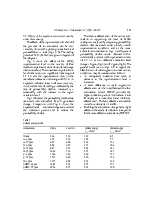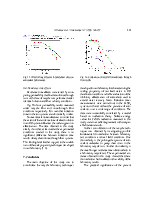














 Desalination 157 (2003)
193–207
Desalination 157 (2003)
193–207 
Induction times induced in an RO system by antiscalants delaying
CaSO4 precipitation
David Hasson*, Alexander Drak, Raphael Semiat
WRI Rabin Desalination Research Laboratory, Department of Chemical Engineering,
Technion–Israel Institute of Technology, Haifa 32000, Israel
Tel. +972 (4) 829-2936/2009; Fax +972 (4) 823-5672; email: hasson@techunix.technion.ac.il
Received 17 February 2003; accepted 20 February 2003
![]()
The aim of the present work is to consolidate laboratory techniques we have developed for determining the scaling threshold limits of RO feed waters and for assessing the relative inhibitory effectiveness of various antiscalants. The maximum permissible water recovery may be determined from induction time measurements of supersaturated solutions recycling through a laboratory RO module with permeate recycling so as to maintain a desired supersaturation level. A systematic series of experiments was carried out so as to characterize the extent of the induction period induced by various antiscalants. Five antiscalants were tested at two dosage levels (6 and 12 ppm) and at three CaSO4 supersaturation levels in the range of 3.7–5.5. Induction times data, extracted from plots of permeate flux vs. time, were successfully correlated with the supersaturation level according to a relationship based on nucleation theory. The results obtained confirm the capability of the proposed recycle technique to discriminate clearly among various antiscalants with respect to their scale suppression effectiveness. Further consolidation of the proposed techniques was obtained by demonstrating that induction times measured in recycle tests are virtually identical to those in once-through runs and that antiscalant molecules retained their full activity under prolonged exposure to pump shear action emanating from the recycling. Finally, surface energies for CaSO4 nucleation measured in this study with and without the presence of an antiscalant were found to be in excellent agreement with literature data. The results of this study lend confidence to the techniques we have developed for characterizing scaling threshold limits and for evaluating rationally the performance of anti-scalants.
Keywords: CaSO4 scaling; Induction time; Scale deposition; Scale inhibitors; Antiscalants; Scaling limits; RO membrane
![]()
*Corresponding author.
Presented at the European Conference on Desalination and the Environment: Fresh Water for All, Malta, 4–8 May 2003. European Desalination Society, International Water Association.
0011-9164/03/$– See front matter © 2003 Elsevier Science B.V. All rights reserved
An essential requirement for a dependable desalination plant is implementation of effective scale-control measures. The basic information needed is the permissible water recovery level at which the plant may be operated under given process conditions without the risk of scale precipitation. Process conditions influencing the permissible water recovery level are numerous and include the supersaturation level of the concentrate, the concentration polarization level, the nature of antiscalant used to suppress the scaling propensity and the antiscalant dosage level. At the present state of knowledge, it is not possible to predict theoretically the limiting recovery level under given process conditions.
The aim of the present work is to extend and consolidate simple laboratory techniques we have developed [1–3] for characterizing the scaling propensity of RO feed waters and for assessing the relative inhibitory effectiveness of different antiscalants. The techniques are based on recycling a feed solution through an RO laboratory unit equipped with the same membrane type and operating under hydrodynamic conditions simulating as closely as possible the Reynolds number and geometry of the industrial module.
Two scaling propensity parameters of practical interest are measured: an upper scaling threshold limit and a lower scaling threshold limit. The upper limit denotes the maximum water recovery at which the supersaturation level attained by the concentrate causes instantaneous scale precipitation on the membrane. It can be simply determined by withdrawal of permeate and continuous recycle of the concentrate. The water recovery level at which there is an abrupt drop in permeate flow rate and a sharp increase in the disappearance rate of the scale forming ions marks the upper scaling threshold limit of the tested water. The lower threshold limit may be defined as the safe maximum water recovery level at which the supersaturation level attained is located in the meta-stable zone [4] so that scale precipitation is prevented or at least delayed for a sufficiently long period of time. The lower limit can be determined by recycling the supersaturated solutions through the membrane at a desired constant supersaturation level and measuring the extent of the induction period preceding the onset of scaling.
Уважаемый посетитель!
Чтобы распечатать файл, скачайте его (в формате Word).
Ссылка на скачивание - внизу страницы.